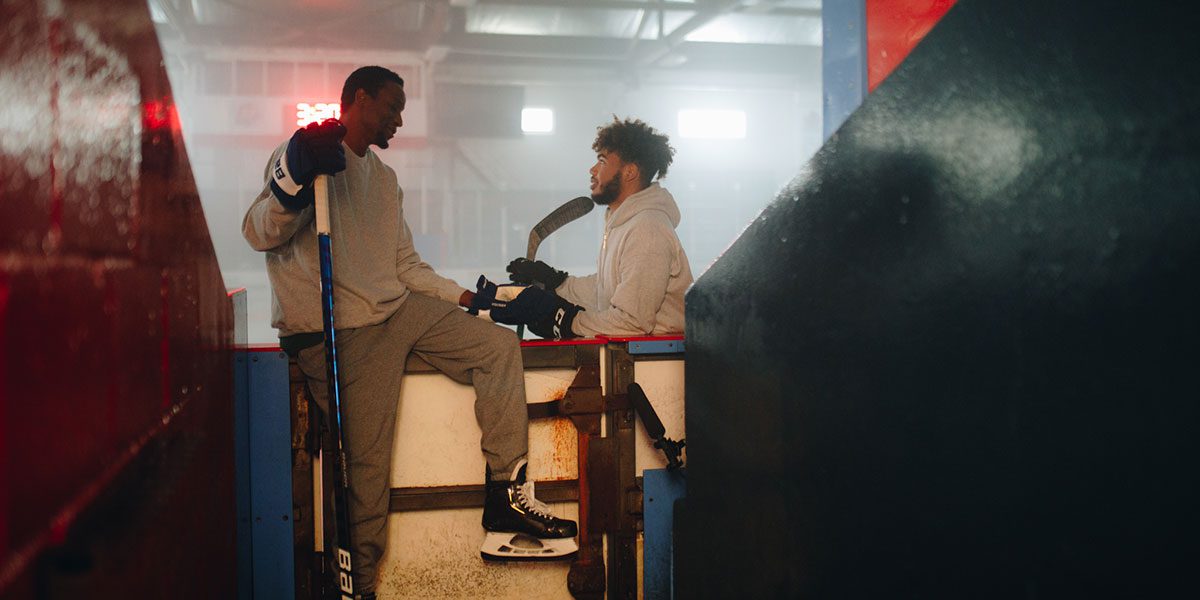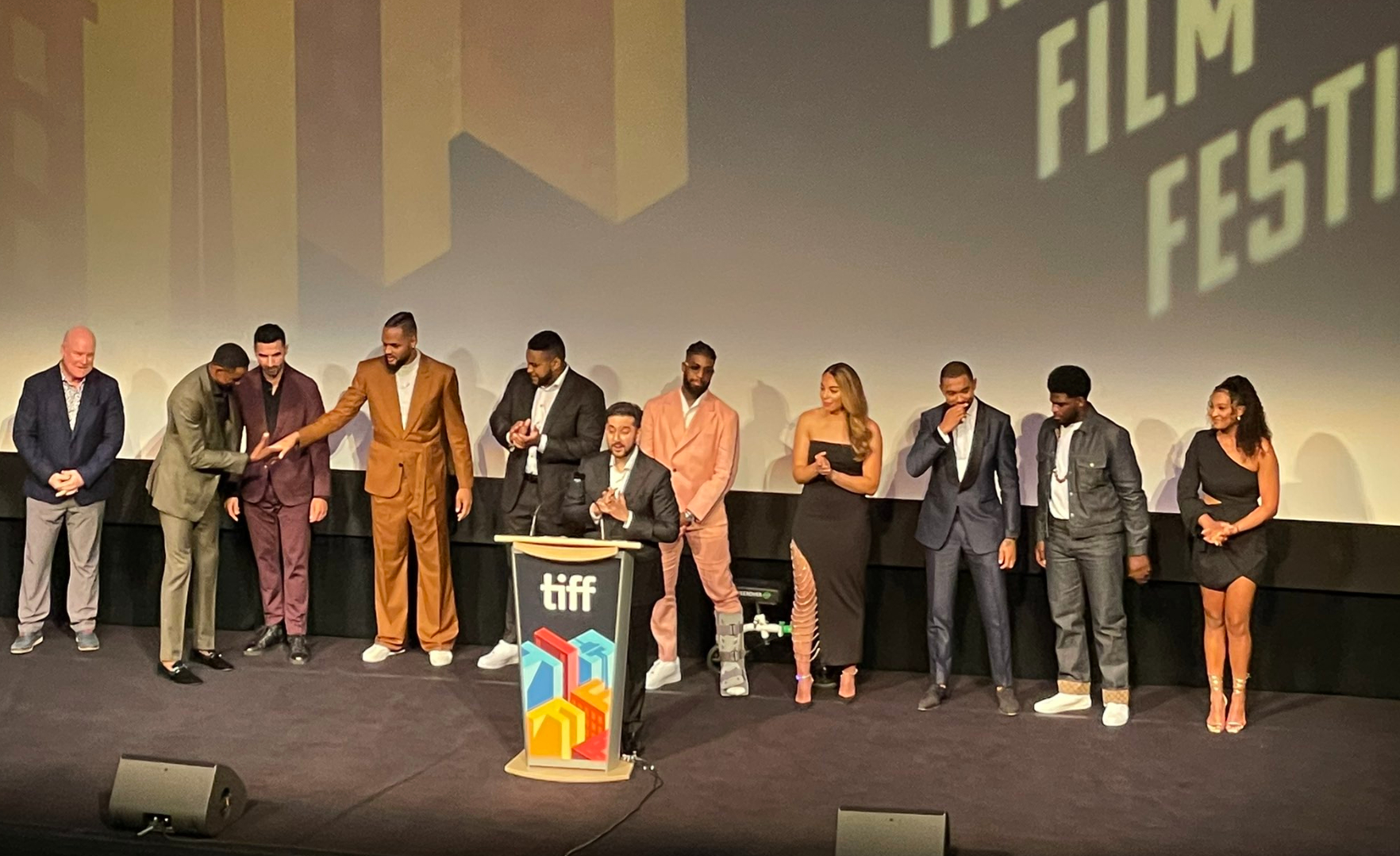
Directed by Hubert Davis, Black Ice is an eye-opening documentary that displays the beauty of sport but also how some people?s love of the game turns to hate against some of its most talented players. The film follows the stories of several African Canadian players whose dreams and careers in hockey have been haunted by instances of blatant and damaging racism. The film focuses on how these personal heartbreaking stories stand as examples in the vein of a much larger system of racism that has extended both on and off the ice over the past 110 years. The film features many amazing players both men and women whose experience in major and minor league hockey cover the broad spectrum of the black experience in ice hockey. These include Toronto Maple Leaf Wayne Simmonds, recently retired Montreal Canadian vet P.K Subban and Saroya Tinker, who plays on the Toronto Six in the Premier Hockey League. The man who ends up becoming one of the central subjects of the film is Akim Aliy who provides one of the most expansive and vulnerable testimonies to both the joys and downfalls of hockey culture.
The film ties these players? struggles back to the roots of Black Ice Hockey players by introducing the audience to the Colored Hockey League, an ice hockey league founded in 1895. The league featured the best Black Canadian players who came up playing hockey in a culture where everyone owned a pair of skates and a stick. Ice also covers the story of Nova Scotia?s black communities which were home to the league. More specifically, the focus is Africville, a town that was slowly torn down and where its residents were forced to be displaced in the wake of the desire to expand the Halifax railroads.

Black Ice tackles the ever-standing belief that racism is barely existent in Canada. Often Canadians will build up the idea that America is the home of ‘real’ racist problems. This idea is proven false just from looking at the experiences that black hockey players face in Canada. Whether it’s from the front office, coaching staff, opposing players or even rabid fans, instances of racism are found all around the hockey world. During TIFF ’22, director Hubert Davis pointed out that a lot that stems from the beauty of hockey?s insular nature. A comradery is formed within a hockey team on the ice, in the dressing room and in the offices of professional teams. This close-knit teamwork is a beautiful part of hockey. Sport is truly a team game. No one player trumps the team. If you?re a hockey fan, just look at Connor McDavid and the Edmonton Oilers. However, due to this unique culture, there is a lurking monster of racism. Where the team and the system triumph over everything, there will be individual players who will stand apart from the system and suffer as a result. ?
There are many stories in this film that will likely shock you. One of them is the crazy instance when Wayne Simmons skated up to try and score in a shootout during an NHL preseason and he had a banana thrown at him. Simmons played for the Philadelphia Flyers at the time and they were in London, Ontario to play the Detroit Red Wings. It?s hard to imagine returning to your home country, only to witness a racist action against him. Simmonds was mostly quiet about the incident and certainly didn?t let his play on the ice show the impact that ,it had on him mentally. In the end the man was only charged with a $200 fine, after being charged with a by-law violation under the Trespass to Property Act. His lawyers claimed he was oblivious to the racial connotations of throwing the banana which doesn?t sound uncharacteristic for a guy who violated the rules for a preseason game (a preseason game, really?). People, of course, ended up supporting him, calling him a good guy who made a lapse in judgement for the love of the sport. Then, after being let off, Christopher Moorhouse stated he hoped this incident would affect his future aspiration in policing. The irony of his career aspiration in view of his actions is so insane you?d think it was a satirical joke, but it wasn?t.
The film is purposeful to bring out the reason that these black players love hockey, and why we all love it. Still, it confronts you with a system that is creating a love-hate relationship between black players and the sport to which many have committed their lives. Incidents like the one that happened to Simmons are not isolated. Black Ice reveals they are part of almost every black player?s experience as they chase after their hockey dreams. These stories always stick to their Canadian roots and make the audience confront the fact that these are Canadian systems that let black hockey players (and black people, in general) down. Davis could have easily gone to incidents in the U.S where black NHL and professional players faced racism, but he focuses on the Canadian flaws exclusively. He wants you to know that Canada needs to be accountable for this problem and move towards change.
The cinematography of the film is gorgeous, using depth of field to create these sharp and layered images of hockey and the environments where it?s played. The artistic photography creates beautiful impressions of the film?s locations in the Canadian outdoors, its indoor rinks and everything in between. The recreation of games from the colored hockey league highlights the beauty of the film?s aesthetic. Perfectly servicing the league as a symbol of pride for the diversity that can thrive in hockey but also the tattered history which bears the scars of a racist system that is still present. The film and its players all know that there is a possibility for change. They hope this film informs you of where hockey and Canada needs to go next.
Black Ice is now playing in theatres.




